What Dirt Bikes Are Street Legal?
Street-legal dirt bikes are motorcycles designed for off-road use that have been modified or manufactured to meet legal requirements for on-road operation. These versatile machines combine the rugged capabilities of traditional dirt bikes with the necessary features to comply with traffic laws, allowing riders to seamlessly transition between off-road trails and public roads. Understanding which dirt bikes are street legal is crucial for riders seeking the flexibility to explore both terrains without legal concerns.
This article will delve into the key components that make a dirt bike street legal, federal and state regulations governing their use, necessary modifications for street legality, popular street-legal dirt bike models, and the process of converting off-road bikes for street use. We’ll also explore the benefits of owning a street-legal dirt bike, insurance considerations, maintenance tips, and safe riding practices.
What Makes a Dirt Bike Street Legal?
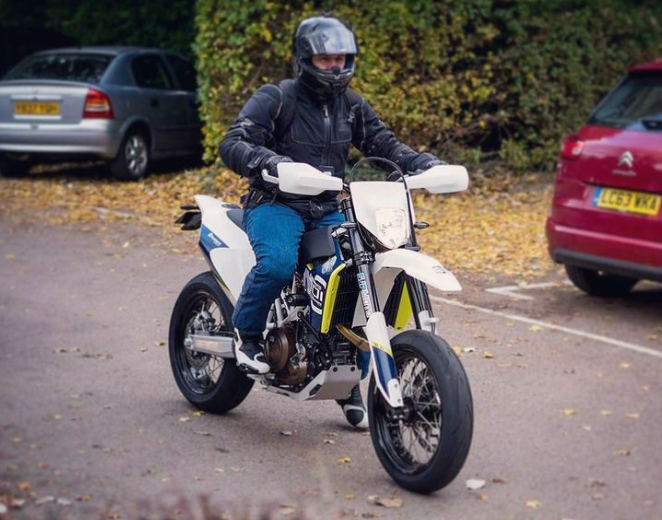
A street-legal dirt bike is a motorcycle that meets all federal and state requirements for operation on public roads. These bikes possess specific components that distinguish them from their off-road-only counterparts. The key components required for street legality include:
- DOT-approved lighting system
- Functional turn signals
- Rearview mirrors
- Horn
- DOT-approved tires
- Speedometer and odometer
- EPA-compliant exhaust system
- License plate bracket and registration
Federal and State Regulations
Federal Requirements: The U.S. Department of Transportation (DOT) sets nationwide standards for street-legal motorcycles. These regulations include:
- Federal Motor Vehicle Safety Standards (FMVSS) compliance
- Environmental Protection Agency (EPA) emission standards
- National Highway Traffic Safety Administration (NHTSA) guidelines
State-Specific Regulations: Each state has its own set of requirements for street-legal dirt bikes, which may vary significantly. For example:
- California: Strict emissions standards, including California Air Resources Board (CARB) compliance
- Texas: Less stringent emissions requirements but specific lighting and equipment regulations
State Regulation Comparison
| State | Emissions Standards | Lighting Requirements | Additional Equipment |
|---|---|---|---|
| California | CARB-compliant | DOT-approved headlight, taillight, turn signals | Mirrors, horn, speedometer |
| Texas | Federal EPA standards | DOT-approved headlight, taillight, turn signals | Mirrors, horn, speedometer |
| New York | OBD-II compliant | DOT-approved headlight, taillight, turn signals | Mirrors, horn, speedometer, brake light |
Necessary Modifications for Street Legality
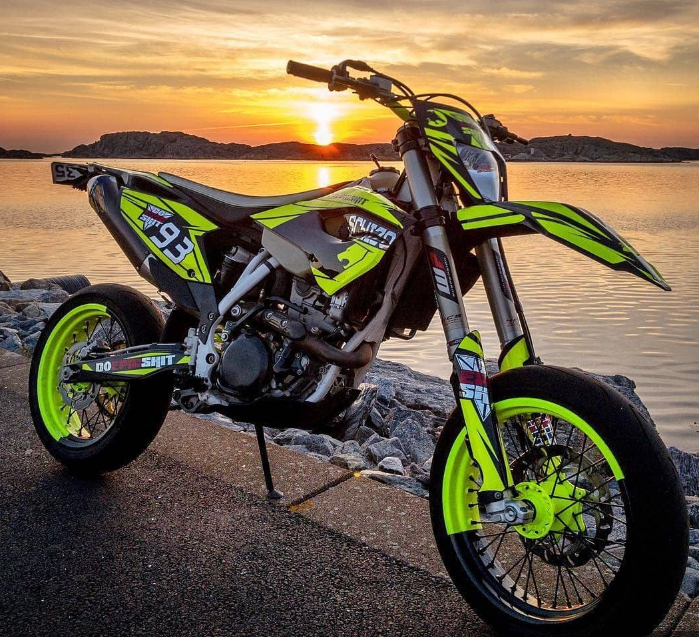
Lighting:
- Headlights: DOT-approved headlight with high and low beam functionality
- Taillights and brake lights: Red taillight visible from 500 feet, brake light activated by both front and rear brakes
- Turn signals: Amber front and red rear turn signals visible from 300 feet
Mirrors and Horns:
- Rearview mirrors: At least one mirror providing a clear view of the road behind
- Functional horn: Audible from a distance of 200 feet
Tires and Wheels:
- DOT-approved tires: Tires must have a DOT certification mark
- Wheel requirements: Proper size and load-bearing capacity for on-road use
Speedometer and Odometer:
- Speedometer: Accurate speed display in miles per hour
- Odometer: Tracks total distance traveled
Exhaust System:
- Emission control: Catalytic converter and oxygen sensors to meet EPA standards
- Noise regulations: Compliant with state-specific decibel limits
License Plate Bracket and Registration:
- License plate mounting: Secure bracket with proper illumination
- Registration and inspection stickers: Displayed as required by state law
Popular Street-Legal Dirt Bike Models
Honda CRF450L: Features and specifications:
- 449cc liquid-cooled single-cylinder engine
- Six-speed transmission
- LED lighting system
- Titanium fuel tank
Pros:
- Excellent off-road performance
- Lightweight for its class
- High-quality components
Cons:
- Higher price point
- Frequent oil changes required
Yamaha WR250R: Features and specifications:
- 250cc liquid-cooled single-cylinder engine
- Six-speed transmission
- Fully adjustable suspension
- Digital instrument panel
Pros:
- Reliable and low maintenance
- Good fuel efficiency
- Versatile for both on and off-road use
Cons:
- Less power compared to larger displacement models
- Higher seat height may be challenging for shorter riders
Suzuki DR-Z400S: Features and specifications:
- 398cc air-cooled single-cylinder engine
- Five-speed transmission
- Disc brakes front and rear
- Electric start
Pros:
- Affordable price point
- Simple and reliable design
- Good balance of on and off-road performance
Cons:
- Dated technology
- Heavier than some competitors
KTM 500 EXC-F: Features and specifications:
- 510cc liquid-cooled single-cylinder engine
- Six-speed transmission
- WP XPLOR suspension
- Brembo brakes
Pros:
- Exceptional off-road performance
- Lightweight for its class
- High-quality components
Cons:
- Expensive
- Requires frequent maintenance
Beta 500 RR-S: Features and specifications:
- 478cc liquid-cooled single-cylinder engine
- Six-speed transmission
- Sachs suspension
- Trail Tech Voyager GPS
Pros:
- Excellent off-road capabilities
- Unique styling
- Good power-to-weight ratio
Cons:
- Limited dealer network
- Less common, which may affect resale value
Converting a Dirt Bike to Street Legal
Steps for conversion:
- Research state-specific requirements
- Install DOT-approved lighting system
- Add turn signals and horn
- Mount rearview mirrors
- Replace off-road tires with DOT-approved tires
- Install speedometer and odometer
- Upgrade exhaust system to meet emissions standards
- Add license plate bracket and obtain registration
Cost considerations:
- Conversion kits: $500 – $1,500
- Professional installation: $500 – $1,000
- Inspection and registration fees: Vary by state
Professional conversion vs. DIY:
- Professional conversion ensures compliance and quality installation
- DIY can be cost-effective but requires technical knowledge and time investment
Benefits of Street-Legal Dirt Bikes
- Versatility for off-road and on-road use
- Convenience and freedom to explore diverse terrains
- Adventure touring capabilities
- Reduced transportation costs (no need for a trailer)
- Increased resale value compared to off-road-only models
When considering the best trail dirt bike that is also street-legal, the Yamaha WR250R stands out as an excellent option. Its lightweight design, reliable performance, and versatility make it well-suited for both trail riding and street use. The WR250R offers a good balance of power, agility, and comfort, making it an ideal choice for riders who want to seamlessly transition between off-road adventures and street riding.
Insurance for Street-Legal Dirt Bikes
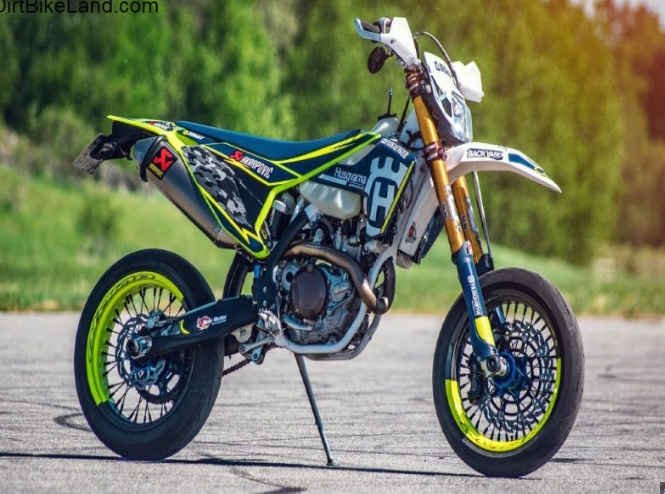
Importance of insurance:
- Legal requirement in most states
- Financial protection in case of accidents or theft
Types of coverage:
- Liability insurance (minimum required)
- Comprehensive coverage
- Collision coverage
- Uninsured/underinsured motorist coverage
Tips for finding the best insurance:
- Compare quotes from multiple providers
- Consider bundling with other insurance policies
- Ask about discounts for safety courses or anti-theft devices
- Review coverage limits and deductibles
Maintenance and Care for Street-Legal Dirt Bikes
Routine maintenance tips:
- Regular oil and filter changes
- Tire pressure and wear checks
- Chain lubrication and adjustment
- Air filter cleaning or replacement
- Brake pad inspection and replacement
Ensuring compliance with street-legal requirements:
- Regular inspection of lighting system
- Monitoring exhaust system for leaks or damage
- Checking tire condition and replacing with DOT-approved options when needed
Riding Tips for Street-Legal Dirt Bikes
Safe riding practices:
- Always wear proper protective gear
- Obey traffic laws and speed limits
- Be aware of surroundings and anticipate potential hazards
- Maintain a safe following distance
- Use turn signals and hand signals when appropriate
Differences between off-road and on-road riding:
- Traction variations between dirt and pavement
- Increased braking distances on paved surfaces
- Different body positioning for cornering
Urban vs. rural riding considerations:
- Urban: Be cautious of heavy traffic, pedestrians, and road hazards
- Rural: Watch for wildlife, loose gravel, and changing road conditions
Essential Gear for Street-Legal Dirt Bike Riders
- DOT-approved helmet
- Protective eyewear or face shield
- Riding jacket with armor
- Riding pants or jeans with knee protection
- Gloves
- Over-the-ankle boots
- Reflective gear for night riding
In conclusion, street-legal dirt bikes offer riders the best of both worlds, combining off-road capability with on-road practicality. By understanding the requirements for street legality, choosing the right model, and maintaining the bike properly, riders can enjoy the freedom to explore diverse terrains while staying compliant with local laws. Whether you’re converting an existing dirt bike or purchasing a factory-built street-legal model, the versatility and adventure potential of these machines make them an exciting option for motorcycle enthusiasts.

Jason Wilkins began his career with a passion for online shopping experiences and deep insights into the outdoor gear market. With the aim of providing excellent choices for those who love an active lifestyle, he established besttraildirtbike.com, specializing in advising and selling Amazon Affiliate products suitable for dirt bikes, accessories, and touring gear.
Leveraging his expertise in SEO techniques and business management skills, Jason has built a reputable brand, attracting thousands of customers. As a dedicated and creative leader, he continuously seeks ways to enhance the user experience and sustainably grow the business.
Jason has in-depth knowledge of dirt bike trends and accessory innovations, constantly updating himself on the latest breakthroughs in this field. On his website, he shares detailed and objective reviews of hot products on the market, along with tips for safe dirt biking and touring.
With the motto “Passion Without Limits,” Jason aspires to inspire many outdoor enthusiasts to explore the wonders of nature. Under his guidance, besttraildirtbike.com is steadily becoming a trusted destination for customers to find quality products for their dirt biking and adventure touring pursuits.
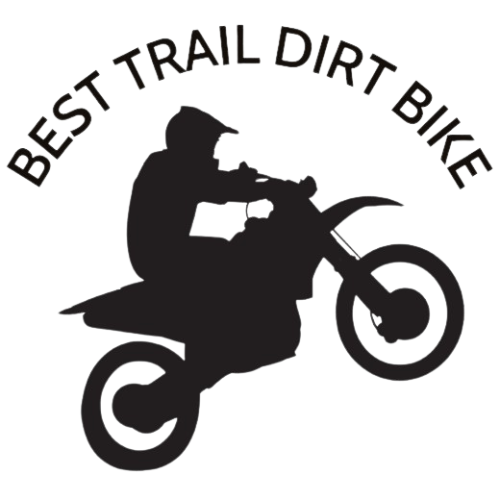
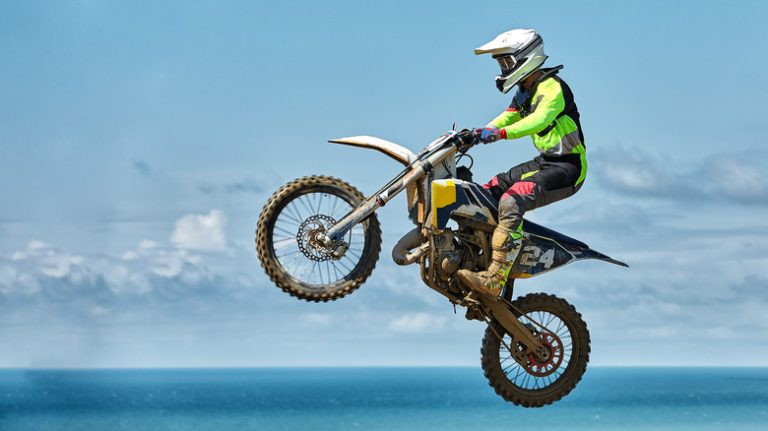
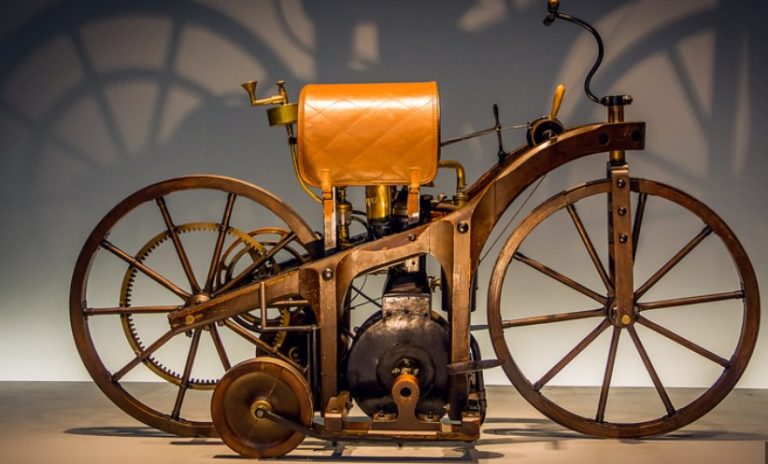
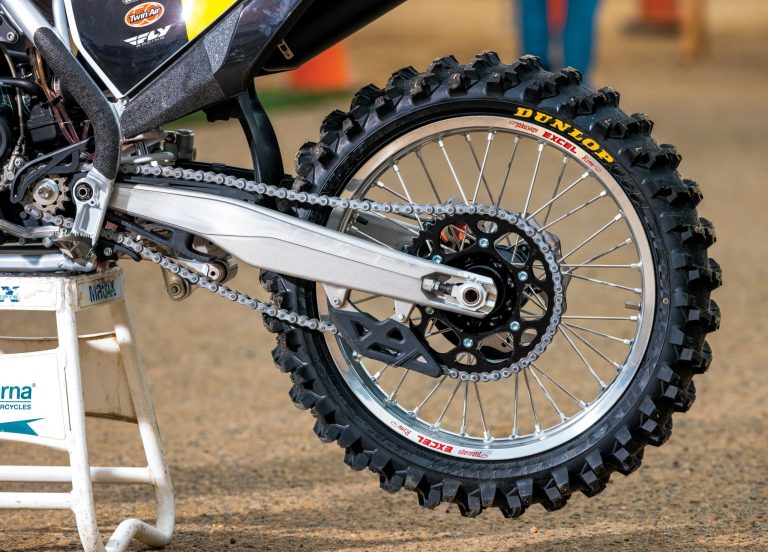
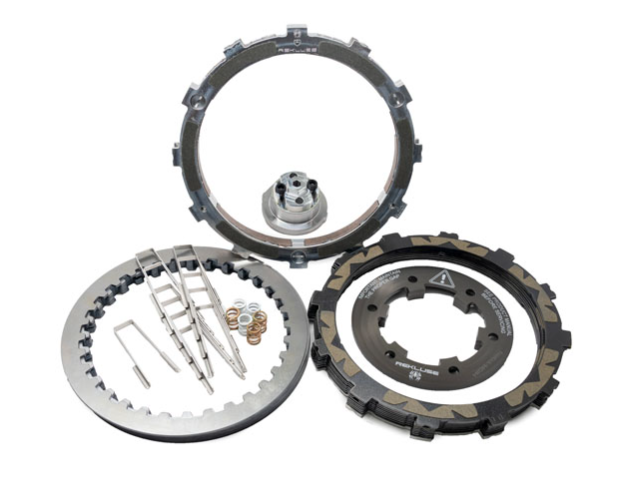
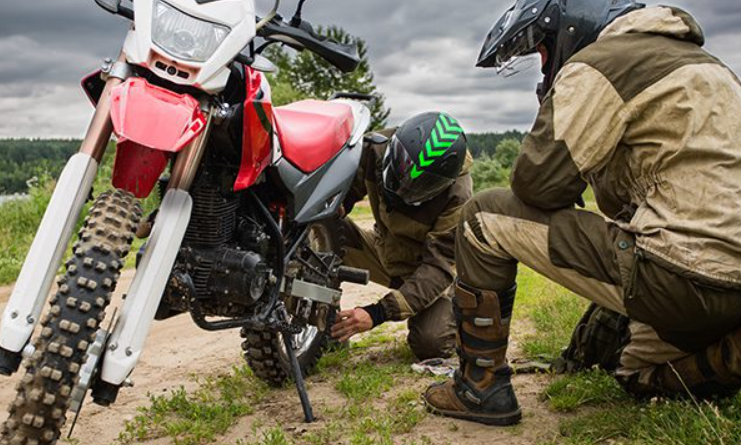
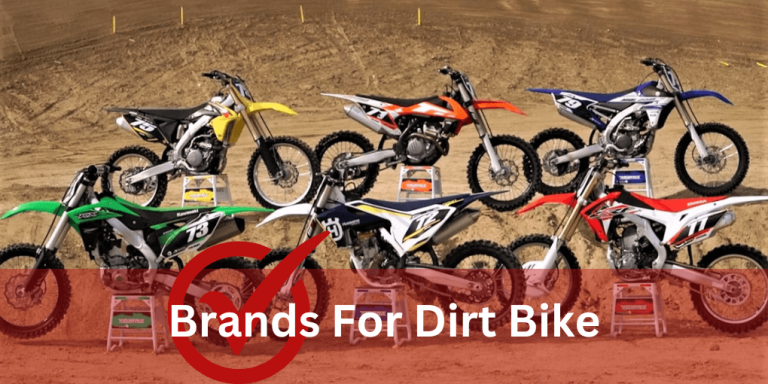
This article provides a great overview of street-legal dirt bikes. It’s helpful to understand the distinction between dual-sport and enduro bikes, and the factors that determine street legality. I’m curious to hear from experienced riders about their favorite street-legal models, especially for those who want a balance of off-road capability and street performance. Any recommendations for specific brands or models would be appreciated!
Thank you for your feedback, John! We’re glad you found the article informative. Regarding your question about favorite street-legal models, many experienced riders appreciate the versatility of bikes like the Yamaha WR250R, Honda CRF450L, and KTM 500 EXC-F. These models offer a good balance of off-road capability and street performance.
For those seeking a more road-oriented experience with off-road potential, the Suzuki DR-Z400S and Kawasaki KLR650 are popular choices. They’re known for their reliability and adaptability to various riding conditions.
If you’re looking for something with more power, the KTM 690 Enduro R and Husqvarna 701 Enduro are highly regarded for their performance both on and off-road.
Ultimately, the best choice depends on your specific needs, riding style, and experience level. We recommend test-riding different models if possible to find the one that feels right for you. Don’t hesitate to ask if you have any more questions about specific models or brands!
This article provides a thorough overview of what makes dirt bikes street legal. The breakdown of required modifications, like lights and mirrors, is especially useful. I’m curious, though, are there specific models that are more easily converted to street use? Also, how do state regulations vary for street-legal dirt bikes?
Hi Jake,
Thank you for your feedback! I’m glad you found the breakdown of required modifications helpful. When it comes to converting dirt bikes to street use, some models are indeed more easily converted than others. Bikes that come with a more robust electrical system and mounting points for lights and mirrors, such as the Honda CRF450L or the KTM 500 EXC-F, often require fewer modifications. These models are designed with street legality in mind and can simplify the conversion process.
As for state regulations, they do vary significantly. For example, California has stringent emissions and equipment requirements, while other states might have more lenient rules. It’s crucial to check the specific regulations in your state or region to ensure compliance. Some states have a process for registering dirt bikes as street legal, which may include additional inspections or paperwork.
Feel free to reach out if you have more questions!
Great guide on street-legal dirt bikes! The details on the necessary equipment for legal road use were very informative. Could you provide more insights on the process of getting a dirt bike registered for street use? Additionally, how do insurance requirements change for street-legal dirt bikes compared to off-road models?
Hi Emma,
Thank you for your kind words about the guide! I’m glad you found the information on the necessary equipment helpful.
Regarding the process of getting a dirt bike registered for street use, it generally involves several steps. You’ll need to ensure that your bike meets all local regulations, which can include installing specific equipment like lights, mirrors, and a horn. Next, you’ll need to pass a vehicle inspection to confirm that your bike complies with safety and emissions standards. After passing the inspection, you’ll need to submit the required paperwork and pay any associated fees at your local Department of Motor Vehicles (DMV) or similar authority. The exact process can vary by state or country, so checking with your local DMV or equivalent agency is a good idea.
As for insurance, street-legal dirt bikes typically require a higher level of coverage compared to off-road models. This is because street-legal bikes are used on public roads and are subject to different risks and liabilities. You’ll need to obtain a policy that covers road use, which may include liability coverage, collision, and comprehensive insurance. Insurance rates can vary based on your location, riding history, and the specific bike, so it’s worth getting quotes from several providers.
I hope this helps you.
Thanks for the detailed article on making dirt bikes street legal. The sections on required safety features and compliance are very helpful. I’m interested in knowing if there are specific dirt bike brands that are known for being more compliant with street regulations. Also, are there any common pitfalls to avoid when converting a dirt bike for road use?
Hi Lucas,
Thank you for your kind words about the article! I’m glad you found the information on making dirt bikes street legal helpful. When it comes to brands known for better compliance with street regulations, brands like KTM, Honda, and Yamaha often have models that are more readily adaptable for road use. These bikes typically come with features that meet road safety standards, such as better lighting systems and more robust signaling.
As for common pitfalls to avoid during the conversion, here are a few key points:
Inadequate Lighting: Ensure your bike has the correct headlights, taillights, and turn signals that meet local regulations.
Poor Installation: Improper installation of road gear like mirrors and license plate holders can lead to safety issues and legal problems.
Failure to Meet Emissions Standards: Check that your bike complies with emissions regulations, which can vary by region.
Neglecting Suspension and Brakes: Street riding often requires different suspension settings and stronger brakes than dirt riding, so make sure these components are adjusted or upgraded as needed.
If you keep these factors in mind, your conversion process should go smoothly. Feel free to ask if you have any more questions!
This post is very informative regarding the process of making a dirt bike street legal. The tips on modifications and necessary equipment are spot on. Do you have recommendations for models that come factory-equipped for both off-road and street use? How does the cost of conversion typically compare with buying a street-legal dual-sport bike?
Thank you for your thoughtful comment! Regarding your question, several models come factory-equipped for both off-road and street use, often referred to as dual-sport or adventure bikes. Popular options include the Honda CRF450L, Yamaha WR250R, Suzuki DR-Z400S, KTM 500 EXC-F, and Beta 500 RR-S. These bikes are designed to meet street-legal requirements right out of the box, offering a balance of off-road capability and on-road performance.
As for the cost comparison, converting a dirt bike to be street-legal typically ranges from $1,000 to $2,500 (including parts and professional installation). On the other hand, purchasing a street-legal dual-sport bike can be more cost-effective in the long run, as these models are factory-built to meet all legal requirements, ensuring reliability and compliance. The choice between conversion and purchasing a dual-sport bike depends on your budget, technical skills, and specific riding needs.
Hi Muriel,
Thank you for your feedback! I’m glad you found the information on street-legal dirt bikes helpful. Emission standards do play a significant role in the conversion process, and they can vary depending on the state. In general, most states require that converted dirt bikes meet specific emissions standards to ensure they are environmentally friendly.
For example, California has some of the strictest emission regulations in the U.S., requiring dirt bikes to have a functioning catalytic converter and pass a smog check. Other states may have less stringent requirements, but it’s always important to check with local regulations to ensure compliance. It’s a good idea to consult with a local emissions specialist or the DMV for the most accurate and up-to-date information based on your state.
If you have any more questions or need further clarification.
Fantastic guide on street-legal dirt bikes! The detailed list of modifications needed is very practical. Could you provide advice on the best ways to ensure that a converted dirt bike remains compliant with local laws over time? Also, how often do street-legal dirt bikes need to pass emissions tests?
Thank you for your kind words, Olivia! To ensure that your converted dirt bike remains compliant with local laws, it’s essential to stay updated on any changes to both federal and state regulations. Regularly inspect your bike’s lighting, mirrors, exhaust, and other required components to ensure they continue to meet legal standards. Additionally, it’s wise to schedule periodic checks with a professional mechanic who is familiar with street-legal conversions.
Regarding emissions tests, the frequency can vary depending on the state. For instance, states like California with stricter emissions standards may require annual or biennial tests, while others may only require testing upon initial registration. Always check with your local DMV or relevant state agency to know the specific requirements for your area.